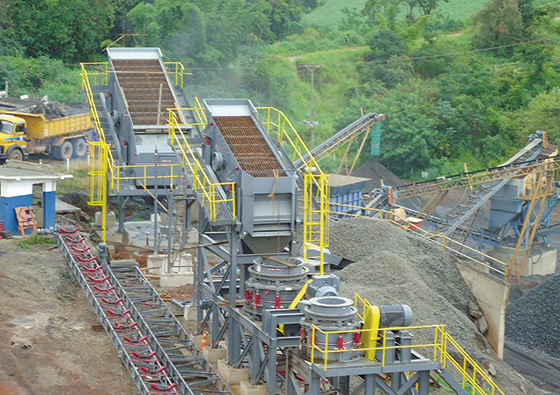Long-life combinations
Besides a thorough installation of the equipment, the correct selection of the type of screen and anti-wear covering may increase the productivity of vibrating screening equipment

Invariably, the correct operation of vibrating screening equipment may have a significant influence in the productivity of a mineral processing plant. This is the main guideline established by experts of players such as Bercam, Metso and Haver & Boecker, heard in this article.
In fact, since it is one of the most demanded parts of the equipment, the selection of the correct material for the screens is a factor of extreme importance. But the productivity does not depend only of this factor, but also of a set of decisions referred to the method of classification, equipment to be used and process to be carried out. But we may start by the screens.
Considering screen technologies, materials such as polyurethane and rubber have higher durability than steel screens, according to the expert Elisete Berlato de Camargo, from Bercam. “When they are replaced in the right periods, these materials ensure also an increase of productivity due to the lower non-productive time caused by maintenance actions”, says her.
Following the same line, Ricardo Ogawa—vibrating equipment manager of Metso for South America—makes also a qualitative differentiation between the several types of screen. For him, technical screens made in rubber and polyurethane, for example, have a useful life four to six times higher than those of steel. “This range, however, will be directly determined by the application and the material to be processed, among other factors”, says him.
Enlarging his analysis, Ogawa adds more information: in addition to the properties of the screen material, says him, the screening capacity depends also of the percent of open area. “And in this feature, steel screens have a higher percent, what increases the processing capacity if compared to synthetic rubber or polyurethane, if blocking does not occur”, explains him, remembering that there are cases where the use of rubber screens ensure higher capacity if compared to normal steel screens, due to the elimination of blocking.
But when only both types of synthetic screens are compared, the expert explains that rubber screens are more indicated when operations involve high impact and when the reduction of blocking is important due to their higher flexibility. But if the operation involves raw minerals that cause high abrasive wear, polyurethane screens are more appropriate, highlights the expert.

Av. Francisco Matarazzo, 404 Cj. 701/703 Água Branca - CEP 05001-000 São Paulo/SP
Telefone (11) 3662-4159
© Sobratema. A reprodução do conteúdo total ou parcial é autorizada, desde que citada a fonte. Política de privacidade














